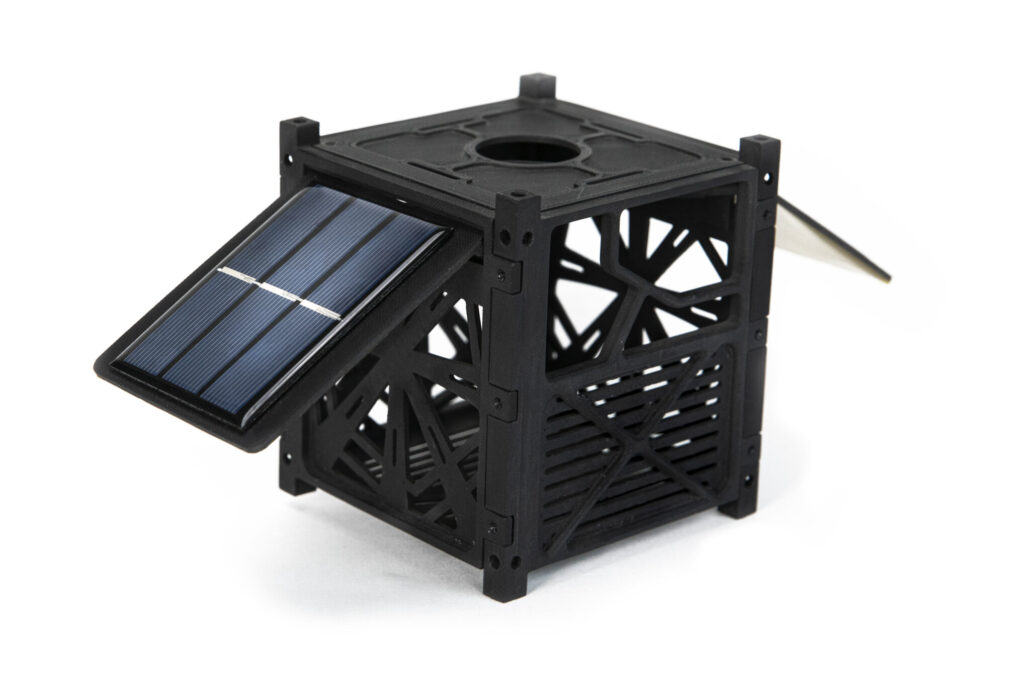Additive manufacturing
Design freedom and flexibility: a new manufacturing paradigm with endless potential.
Prototypes and small series made with additive manufacturing technologies involving polymer, metals and composite materials.
Utmost discretion and quick delivery time with an outstanding outcome value.
Design for additive manufacturing
Designing a part starting with its intended purpose: maximum freedom in manufacturing.
DFAM allows for the design of highly intricate geometries, customized and on-demand products. Higly optimized design in terms of number of parts, repeatability, reliability, and costs.

Technologies and materials
With our own equipment, we can produce prototypes and small series using the most appropriate technology to achieve the best results.
3D printing, machining and surface finishing to achieve parts ready for their final use.

SLM-DMLS
Benefits
Being able to produce a finished product, or a prototype for testing, in one simple and fully automatic process keeps costs and production time down – the more complicated the geometry to be realized.
DMLS and SLM are additive manufacturing technologies that allow metal parts to be printed from a bed of spray-dried powders. Used materials include cobalt chrome, aluminum alloys, titanium, steel, nickel, bronze, and silver.
This 3D printing technology has a high degree of accuracy, detail preciseness, and makes it possible to manufacture metal prototypes ready for testing or completed parts for post-processing. DSLM/SLM is an excellent solution for small batch manufacturing because of the speed of execution and suppression of equipments costs.
DSLM/SLM also allows the creation of highly complex geometries in a single piece – intended for a variety of fields and industry branches.
SLS
Benefits
SLS technology is based on the fusion of high-performance thermoplastics.
There is no need for support construction, and as a consequence it allows a wide degree of design freedom paired with a broad variety of materials.
Undercuts, holes and ducts become easily achievable geometries. Opportunity to print large parts with both good surface finishing and the option of further refinements to improve its aesthetic, tactile, and functional aspects.


FDM-FFF
Benefits
FDM or FFF technology is based on the extrusion through heating of a thermoplastic filament that turns the material into a liquid. Materials are deposited on the print plate through a layer path where they solidify. In a line pattern, one new layer merges with the bottom one, thus gradually forming the object on a layer-by-layer basis. Layers of material deposited by the extruder are evident on the surface of the object, and these can be partially or totally removed by subsequent finishing work.
This technology requires support structures where needed – including water-soluble ones – and makes it possible to create parts with virtually any geometry and an extremely accurate precision, even sometimes in layers up to 0.100 mm.
Finishing
Related to 3D printing, we provide finished products using processes of:
- Smoothing
- Painting
- surface finishing
- machining
- threaded inserts’ placement
- heat treatments and optimization of surfaces finishing by Hipping


R&D
Our Research and Development department is committed to the development of materials, both polymers and metals specifically designed for client-specific applications. We also coordinate laboratory analysis and mechanical testing in complete discretion of the projects under development.
Machining
Finished machining parts such as turning, milling, grinding and EDM for both parts made with AM technologies and parts crafted from solid, such as molds, and small and medium series.
High dimensional accuracy for any type of part, high quality granted by our dimensional testing.


